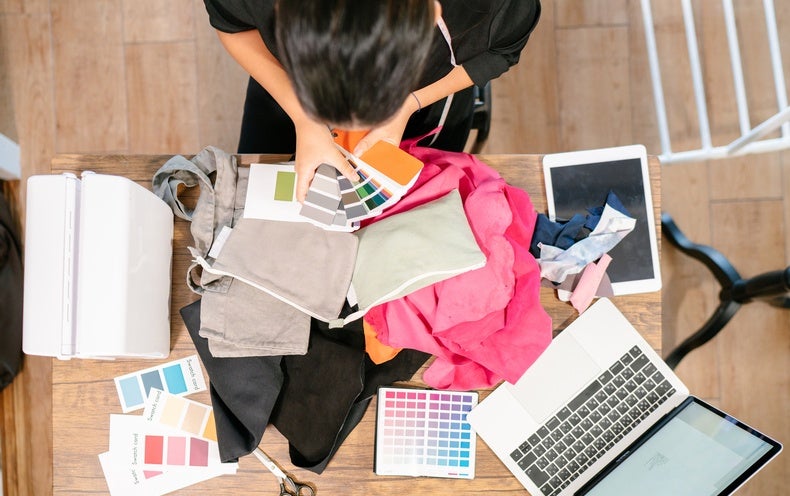
No doctor has ever prescribed a shirt to save a patient’s life. But on a family summer vacation in 2017, Rob Leibowitz wore a T-shirt while walking around Disney World that bore the phrase: “In Need of Kidney, O Positive.” After a picture was posted on Facebook, the story went viral, and a few months later, Leibowitz, who had been on the transplant list for several years, underwent a successful surgery to implant a kidney donated by a complete stranger. Although this story might be an anomaly, it made me wonder: can medicine and fashion intersect in other ways?
They might seem like as odd a combination as polka dots and plaid. Yet fashion, broadly defined, is already being considered in health care settings. For example the effect of hospital gowns on patients has been studied, and it should come as no surprise that many patients report feeling a loss of privacy, individuality and autonomy when putting on a gown. Furthermore, the hospital gown prompted patients to internalize the idea that they were unwell. In one of these studies, a patient said, “I would say that when the gown comes out there is something that psychologically goes ‘this is serious, I’m ill.’”
As a result of such criticism, designers ranging from students at Parsons School of Design to Diane von Furstenberg have rethought what a patient gown could look like. Such redesigns have not been widely adopted by hospitals yet, perhaps because the gowns have to be cheap, easy to manufacture and easily washable. However, even if they’re only available to people who will be spending considerable time in the hospital, gowns in different sizes and colors might help give these patients a feeling of control and agency—especially when so much is out of their control.
In fact, creative solutions to patient gowns have already been shown to have positive effects in clinical settings. At Weill Cornell, young patients undergoing MRI scans were given an “MRI-am-a-Hero” kit to explain the procedure and make the experience feel like part of a superhero adventure. Among other activities, patients could choose shorts and a T-shirt with superhero emblems to wear inside the machine. When studying the program, researchers found that the kit decreased the percentage of pediatric MRI cases that needed sedation by more than five percentage points—showing the potentially transformative nature of hospital attire.
The association of garments with illness could be one of the reasons why, in many Western countries, few people wore facemasks before the pandemic to protect themselves from respiratory illnesses such as the H1N1 influenza. Just as a patient gown has been associated with being ill, wearing a face mask in public was associated with being diseased and even dangerous.
Today, by contrast, they’re increasingly seen as a fashion accessory—and while that might seem like an attempt by retailers to profit from the COVID crisis, there are potential benefits to this perspective. In an interview with NPR, for example, fashion historian Valerie Steele said that “fashionizing masks is a good way to normalize them and to say that you don’t need to be scared.” That view is supported by research in the Journal of Hospital Infection, which points out that “Interestingly, young Korean pop singers made the wearing of face masks fashionable,” which might help explain why the incidence of COVID-19 has been so low in South Korea.
Fashion is also addressing the needs of the differently abled in the form of so-called “adaptive fashion,” designed to allow a person to easily dress him/herself stylishly. The beauty of adaptive fashion lies not only in its functionality but also in the effect it can have on the wearer’s self-esteem. The lack of appropriate clothing has discouraged people with mobility impairments from going to events such as school dances, job interviews and funerals.
Along with companies like Target and Zappos, one of the most successful brands to create an adaptive line has been Tommy Hilfiger, whose distinctive prints and colors now appear on clothing with features like one-handed zippers and magnetic buttons for people who have dexterity impairments; tagless and flat seams for people who have sensory sensitivity; and pants with higher backs and easy closures for people who use wheelchairs (try putting on or taking off a pair of jeans while sitting and you’ll realize how difficult this is).
The research is persuasive, but my own experience also has shown me the value of thinking about how important fashion can be in settings where it has traditionally been ignored. A few years ago, I was working on a clinical study that aimed to understand how patients could find potential kidney donors through social networks. Inspired by the “Disney Dad,” one of the first things we did when we met the study participants was to hand them a T-shirt with the transplant center’s phone number on it. I later found out several of them had already created their own custom shirts. As I got to know the people in the study, I remember asking one woman about her shirt, which was pale pink with “Help Me Find a Kidney” on the front and a picture of her and her family printed on the back. “Every time I put it on,” she explained, “I am reminded that there is still hope.”
from WordPress https://ift.tt/3mDxqTi
via IFTTT













0 Comments